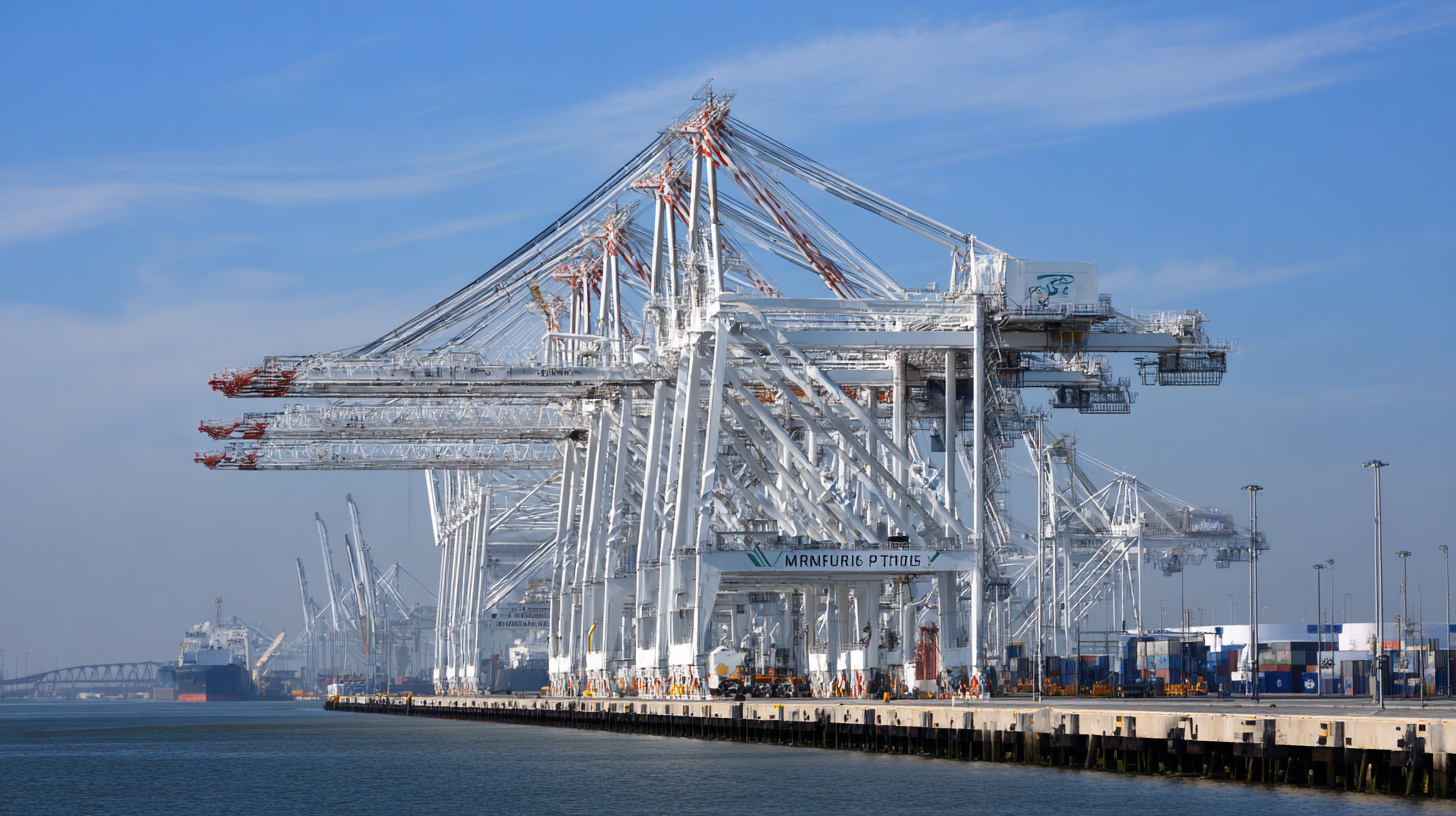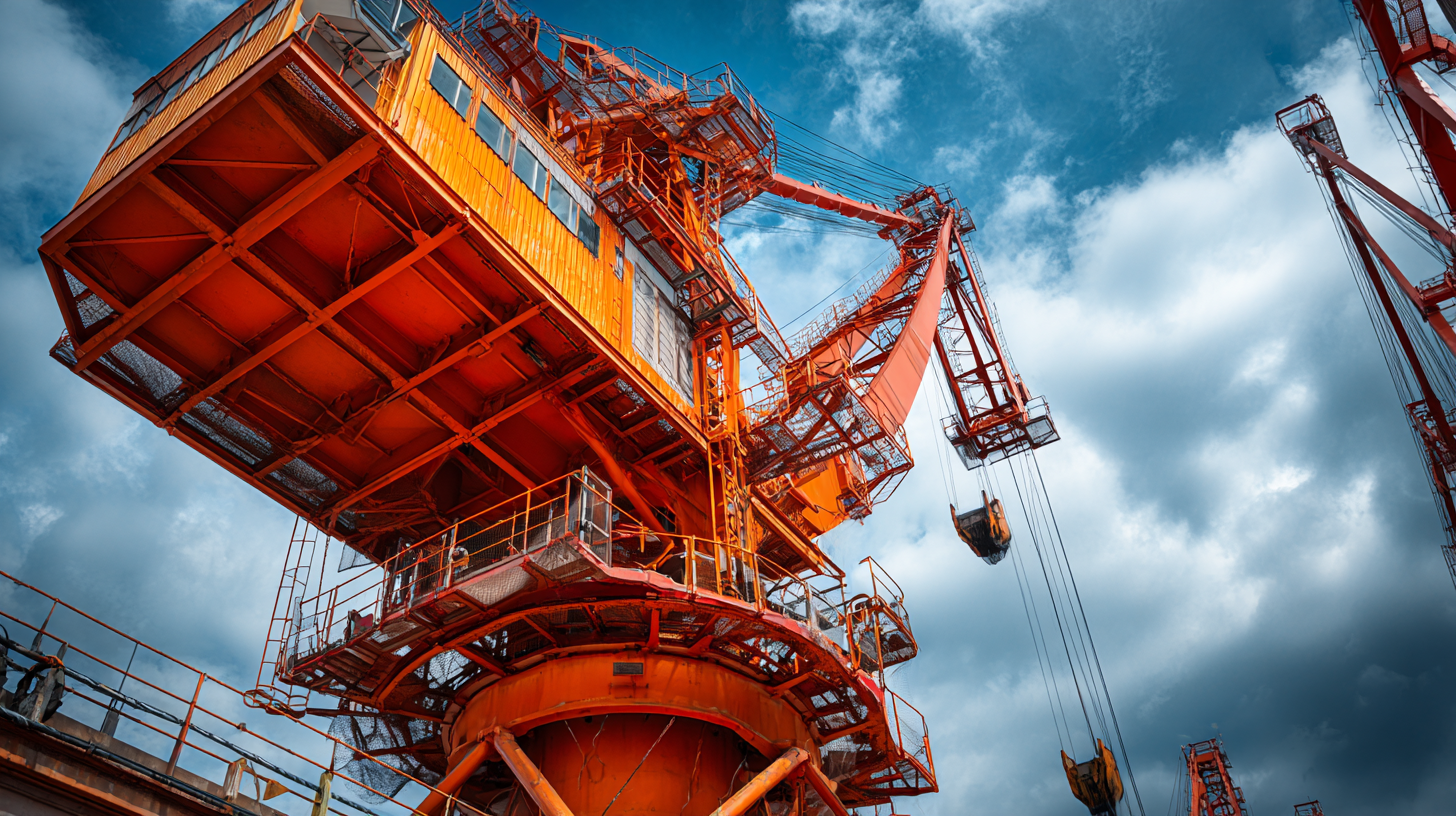Inquiry
Form loading...
-
Phone
-
Wechat

-
Whatsapp

In today's rapidly evolving industrial landscape, Over Head Cranes have emerged as critical assets, enhancing operational efficiency and safety across various sectors. According to a report by Smithers Pira, the global overhead crane market is expected to reach $5.2 billion by 2025, with an annual growth rate of 4.7%. This growth is driven by the increasing demand for automation and the need for lifting heavy loads in manufacturing, warehousing, and construction. Additionally, a study by Technavio highlighted that the rising investments in smart transportation and logistics are prompting industries to adopt advanced overhead crane designs. As we explore transformative success stories from diverse industries, we will also present key statistics that underscore the significance of Over Head Cranes in shaping the future of industrial operations. This blog serves as a comprehensive checklist of emerging trends and best practices, providing valuable insights for industry professionals looking to harness the power of overhead crane technology.

The use of overhead cranes has emerged as a game changer in the manufacturing sector, driving efficiency and productivity to unprecedented levels. Many companies have embraced these innovative lifting solutions to streamline their operations. For instance, a major automotive manufacturer reported a 30% reduction in assembly time after integrating a series of overhead cranes into their production line. By utilizing these cranes, they efficiently moved heavy parts across the facility, significantly minimizing downtime and manual handling risks.
Another remarkable success story comes from a steel processing plant that struggled with labor-intensive logistics. After implementing a specialized overhead crane system, the plant achieved a remarkable 50% increase in operational output. The cranes enabled the workers to handle bulk materials with ease, transforming the workflow from a cumbersome process to a fluid operation. The facility not only reduced its labor costs but also improved safety, as workers were no longer required to navigate heavy loads manually.
These success stories illustrate the transformative power of overhead cranes in enhancing manufacturing efficiency. Companies that invest in this technology can expect not only immediate benefits in productivity but also long-term advantages in safety and operational effectiveness. As more industries recognize the potential of overhead cranes, the future of manufacturing looks increasingly promising.
Overhead cranes play a pivotal role in enhancing productivity across various industries, with a notable impact reflected in key statistics. According to recent analyses, implementing overhead crane systems has led to an impressive
30% increase in operational efficiency in manufacturing settings. This can be attributed to their ability to streamline material handling processes, minimizing the time workers spend on moving heavy items manually. Furthermore, industries that utilize overhead cranes report a significant reduction in workplace accidents, as these systems allow for
safer handling of loads, underscoring their importance in promoting workplace safety.
Moreover, the versatility of overhead cranes has far-reaching effects on multiple sectors. In construction and logistics, for instance, data shows that projects equipped with modern overhead cranes see a
40% faster completion rate. This acceleration not only optimizes labor costs but also enhances overall project profitability. As industries continue to evolve, the integration of advanced overhead crane technology is becoming a
cornerstone for maximizing productivity and efficiency, proving that these systems are essential for organizations aiming to stay competitive in a fast-paced market.
Innovative Features of Modern Overhead Cranes Driving Industry Transformation
Modern overhead cranes are revolutionizing industries by incorporating advanced features that enhance performance and safety. With a growing emphasis on automation, these cranes are now equipped with smart technology that allows for remote monitoring and operation. According to a recent report by Markets and Markets, the global crane market is expected to grow from $35 billion in 2021 to over $50 billion by 2026, highlighting the increasing reliance on technology in heavy lifting applications. Enhanced safety mechanisms, such as load moment indicators, minimize the risks associated with lifting heavy loads, contributing to a safer working environment.
In addition to smart capabilities, modern overhead cranes also feature energy-efficient designs and materials that comply with stringent environmental regulations. Studies show that energy-efficient cranes can reduce operational costs by up to 25%. For businesses looking to upgrade their lifting equipment, investing in cranes with regenerative drives can significantly lower energy consumption during operation.
Tips: When selecting an overhead crane, consider models with integrated telematics for real-time performance analytics. This feature can not only enhance efficiency but also extend the lifespan of the equipment by enabling predictive maintenance. Additionally, ensure that the crane meets all relevant safety standards to protect your workforce and minimize liability risks. Implementing these innovations can lead to transformative improvements across various industries.
The integration of overhead cranes into industries faces several challenges, particularly in adapting to rapid technological changes and evolving market demands. As the material-handling market shifts, companies must confront issues such as resistance to change, the need for skilled operators, and the necessity of aligning crane operations with automation technologies. This transition can be especially daunting for organizations unfamiliar with advanced systems like smart EOT cranes, which leverage sensors and artificial intelligence for enhanced efficiency.

To ensure successful integration, companies should adopt a few strategic tips. First, conducting thorough training programs for operators not only improves safety but also increases productivity by familiarizing personnel with new technologies. Second, investing in automation can streamline operations; smart overhead cranes are designed to optimize workflows and reduce manual labor, making them a viable solution in today’s competitive landscape. Lastly, fostering a culture of innovation within the organization encourages team members to embrace new technologies, paving the way for smarter transitions and greater operational efficiency.
By addressing these challenges and implementing strategic measures, industries can effectively harness the full potential of overhead cranes, thereby enhancing productivity and driving success in an ever-evolving market.
The rise of artificial intelligence (AI) and automation is reshaping the landscape of overhead crane technology, streamlining operations and enhancing safety measures across various industries. According to a report by ResearchAndMarkets, the global market for crane automation is anticipated to grow at a compound annual growth rate (CAGR) of 10.5% from 2021 to 2026. This growth reflects the increasing demand for more efficient, less labor-intensive systems that AI technologies can provide. Advanced machine learning algorithms enable cranes to optimize load handling, significantly reducing the risk of accidents and ensuring compliance with safety regulations.

Furthermore, AI integration facilitates predictive maintenance, allowing operators to monitor the health of crane components in real-time. A study by MarketsandMarkets indicates that predictive maintenance could reduce maintenance costs by up to 30% and improve equipment reliability by as much as 25%. The automation of crane systems also leads to a better allocation of human resources, allowing operators to focus on more complex tasks while routine lifting and transporting is efficiently handled by AI-enabled cranes. As industries increasingly adopt these transformative technologies, the future of overhead crane operations looks promising, with enhanced productivity and safety at the forefront.
